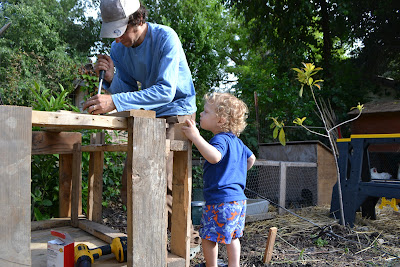Yesterday I took a 3-hour fermentation class with local fermentation celeb,
Nishanaga Bliss. Her book, Real Food All Year, just came out this April. Exciting take-away points from the class are:
Humans have been fermenting foods (as a way to preserve) for over 30,000 years.
Only in the last 200 years, since the advent of canning and refrigeration, have we stopped eating fermented foods.
Fermentation is safe; botulism cannot form in fermented foods because air is present.
Fermenting increases nutrient value, reduces toxins in the body, reduces the glycemic load of foods, boosts the immune system, and helps digest lactose by providing enzymes.
Above, you can see chow-chow (a southern spicy condiment delicious with grilled meat) fermenting on the right and creme fraiche fermenting on the left.
Below are three jars of sauerkraut.
First you chop up the cabbage and any other veggies.
Then you add spices, herbs, and salt (depending on what flavor you want).
Then you massage the mixture for several minutes until the mixture is really moist and there is liquid in the bottom of the bowl. Here is a classmate massaging her second batch while her first batch (with turmeric, ginger, mustard seeds) sits in the foreground.
Of course the first thing I did when I came home from the class is make more. This is a simple sauerkraut of cabbage, carrot, celery seed, mustard seed, and fennel bulb with leaves. And salt. (All you need is about 1 TBSP per jar).
Avery discovered that eating raw cauliflower florets is fun.
Now we let it sit for at least 3 days (and if we want to, 3 months) before eating. The reason that the first picture has water jars weighting the kraut is because the veggie mixture must be below the level of the liquid in order for a good ferment. Then we covered them in cloth napkins with rubber bands to secure them so bugs aren't allowed in.
Why all this experimenting?
Because our peach-eater here will benefit from a little fermented food each day for optimal health.
And so will we.






















.JPG)

